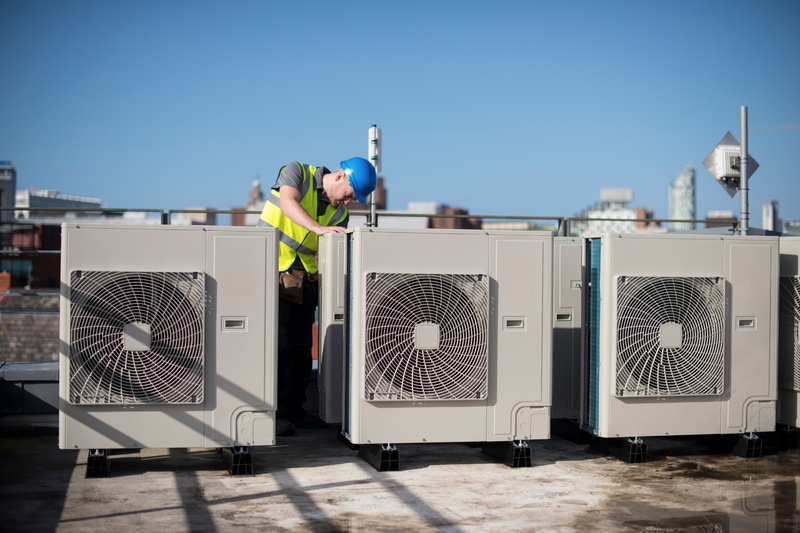
Space optimisation and efficacy are of the utmost importance in the domain of heating, ventilation, and air conditioning (HVAC) systems. Rafter-mounted HVAC platforms offer a unique solution to both challenges, providing numerous benefits that elevate performance and functionality. In this article, we’ll delve into the advantages of rafter-mounted HVAC platforms, exploring how they raise the bar in HVAC system design and installation.
Maximising Space Utilisation
Traditional HVAC systems often occupy valuable floor space, especially in commercial and industrial settings where square footage is at a premium. Rafter mounted HVAC platforms address this issue by utilising unused overhead space. By mounting HVAC equipment on rafters or overhead structures, these platforms free up floor space for other purposes, such as storage or additional machinery. This maximisation of space utilisation is particularly beneficial in crowded or confined environments where every square foot counts.
Enhanced Energy Efficiency
Modern HVAC design is predicated on efficiency, wherein energy consumption assumes a substantial role due to its environmental implications and potential to reduce expenses. Rafter-mounted HVAC platforms contribute to enhanced energy efficiency in several ways. Firstly, by positioning HVAC equipment closer to where air distribution occurs, these platforms minimise ductwork lengths, reducing energy losses associated with air transport. Additionally, elevated placement can improve airflow dynamics, optimise system performance, and reduce the workload of HVAC components. The result is a more energy-efficient HVAC system that delivers superior comfort while lowering operational costs.
Improved Air Quality
Maintaining indoor air quality is essential for occupant health and comfort, particularly in commercial and industrial settings where pollutants and contaminants can accumulate. Rafter-mounted HVAC platforms play a role in improving air quality by facilitating strategic placement of air handling units and filtration systems. By positioning these components above ground level, where dust, debris, and other pollutants are less likely to settle, rafter-mounted platforms help prevent contamination of the HVAC system. Moreover, elevated placement can simplify maintenance tasks, making it easier to access and service filters and other components, further contributing to better indoor air quality.
Streamlined Installation And Maintenance
The installation and upkeep of HVAC systems can be laborious and intricate undertakings, necessitating meticulous coordination and specialised effort. Rafter-mounted HVAC platforms streamline these tasks by providing a convenient and accessible mounting solution. Unlike traditional ground-mounted systems, which may require extensive ductwork and infrastructure modifications, rafter-mounted platforms can be installed with relative ease, minimising disruption to operations. Similarly, routine maintenance tasks, such as filter replacements and equipment inspections, are simplified with overhead placement, reducing downtime and associated costs.
Adaptability And Flexibility
In today’s dynamic business environment, adaptability and flexibility are essential qualities for HVAC systems to possess. Rafter-mounted HVAC platforms offer these attributes by providing a versatile mounting solution that can be tailored to specific requirements. Whether retrofitting an existing facility or designing a new construction project, rafter-mounted platforms can accommodate various HVAC configurations and equipment sizes. This adaptability enables designers and engineers to optimise system layouts for maximum efficiency and performance, ensuring that HVAC solutions meet the evolving needs of their users.
Aesthetics And Space Optimisation
In addition to their practical advantages, HVAC platforms mounted on rafters enhance the visual attractiveness of interior environments. By removing bulky HVAC equipment from floor level, these platforms create a cleaner, more open environment that enhances visual appeal and promotes a sense of spaciousness. In retail, hospitality, and other customer-facing industries, this aesthetic improvement can positively impact customer perceptions and satisfaction. Furthermore, the freed-up floor space can be utilised for decorative elements, seating areas, or product displays, further enhancing the overall ambience of the space.
Conclusion
Rafter-mounted HVAC platforms represent a significant advancement in HVAC system design and installation, offering a range of benefits that elevate performance, efficiency, and functionality. From maximising space utilisation to enhancing energy efficiency and improving air quality, these platforms provide a versatile solution for a variety of applications. As businesses and industries continue to prioritise sustainability, comfort, and operational efficiency, rafter-mounted HVAC platforms are poised to play a central role in meeting these evolving needs, raising the bar for HVAC system design and performance.

